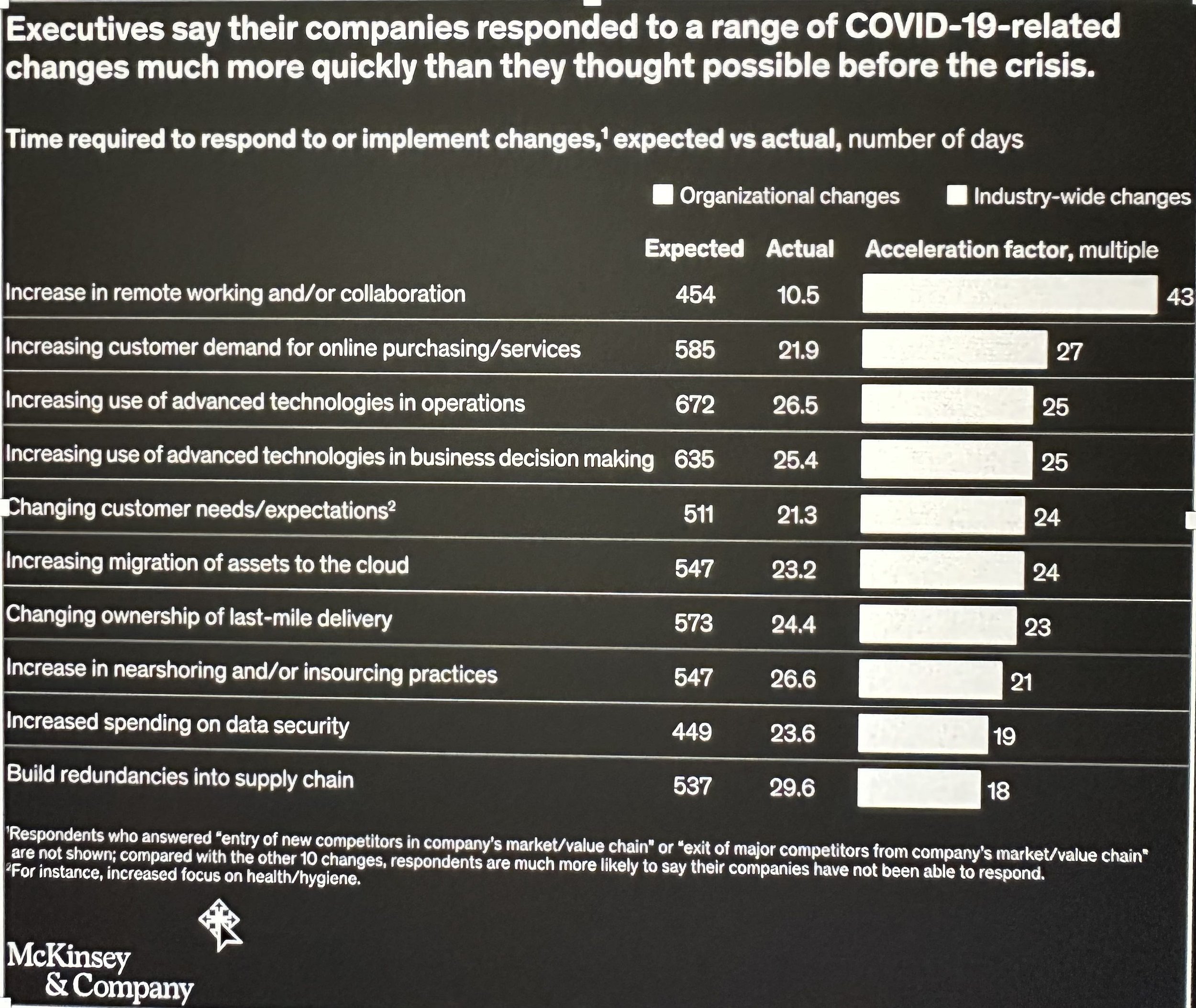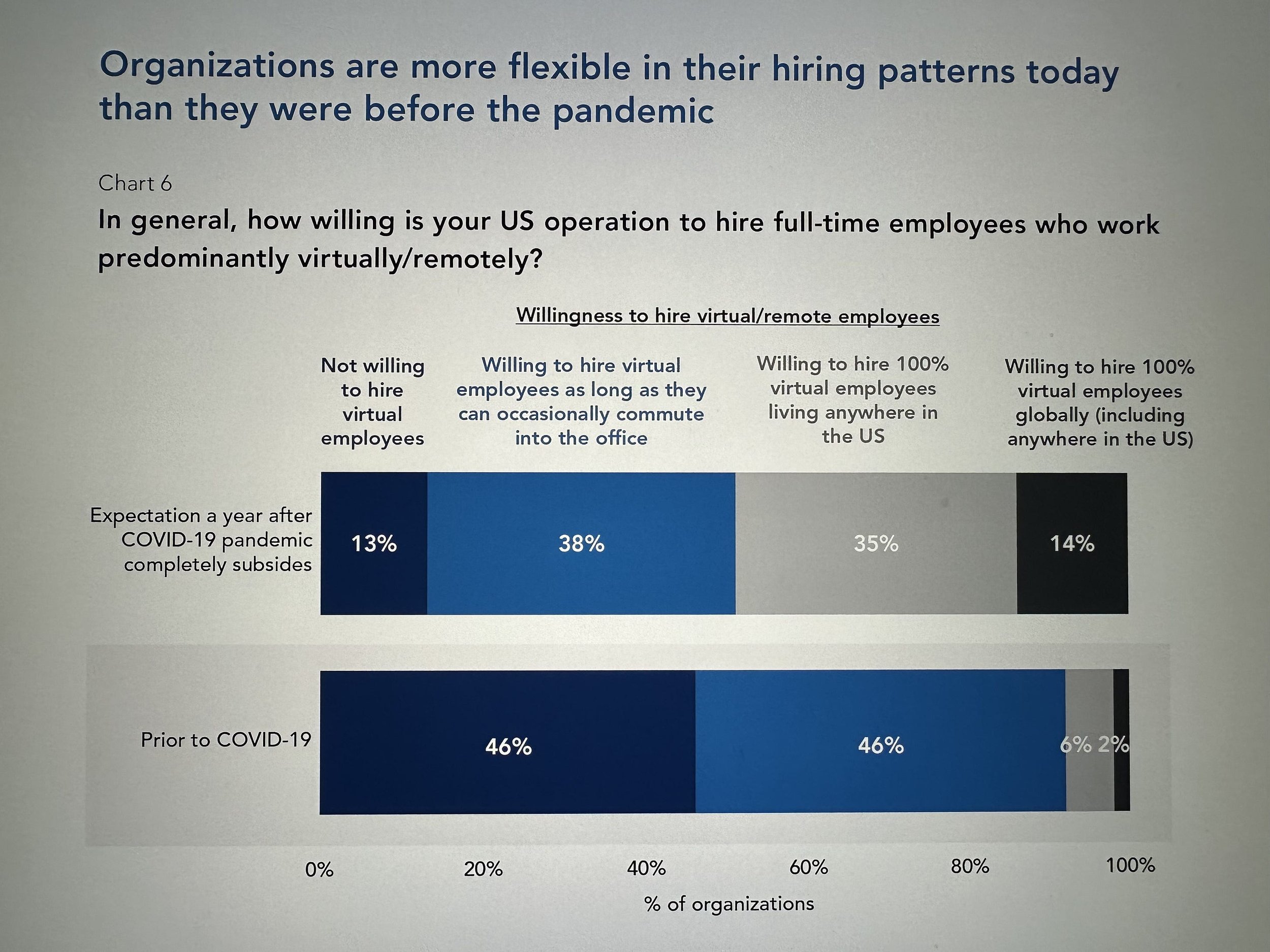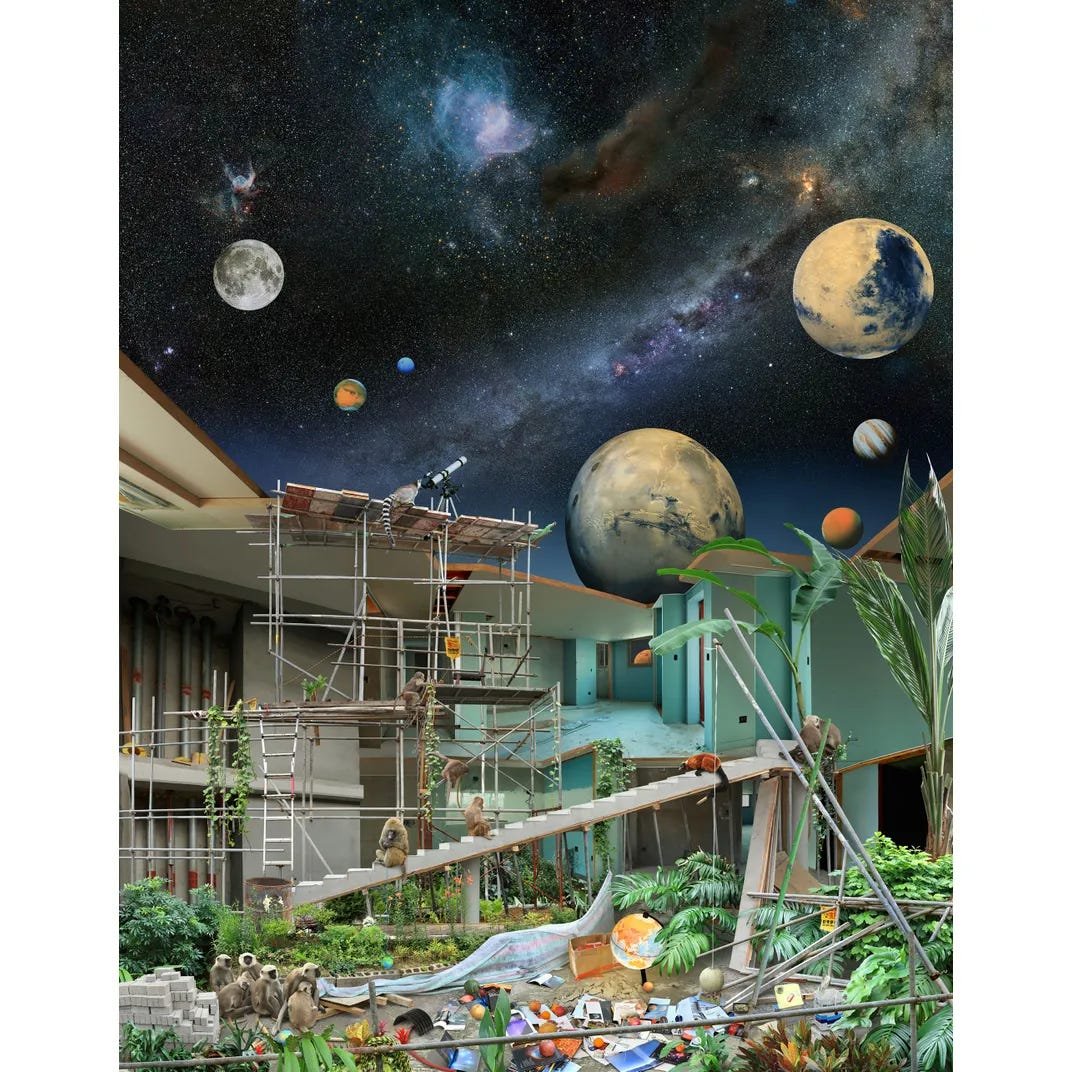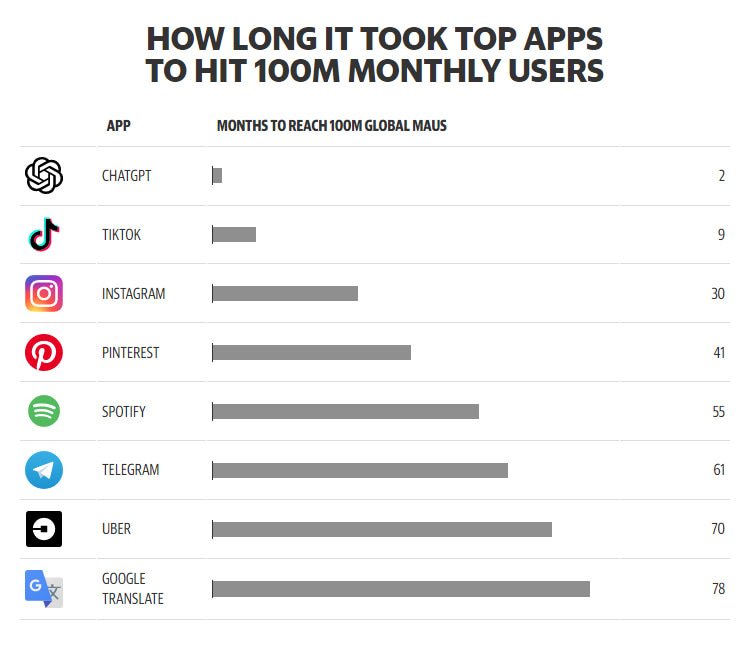Creative Cultures.
Photography by Michele Sons
In 2010 Kat Gordon was the rare creative director who was a woman.
3 percent of creative directors were women then and almost no one of color.
Kat decided to do something about it, and she began The 3% Movement built on the belief that Diversity=Creativity= Profitability.
Ten years later after a decade of conferences and other initiatives nearly 30 percent of creative directors were women and while there is still a way to go Kat re-imagined and re-invented the movement to be even more community and peer to peer driven.
Kat was the latest guest on What Next? where she discussed how to be “Creative about Creative Leadership”. The conversation is applicable to any company , individual or leader regardless who might be grappling with culture, creativity, combining AI with humans, the future of the workplace and much more.
Photography by Michele Sons
Creative cultures are communities of belonging held up by trampolines of trust and creative entrepreneurship.
For decades companies have run as hierarchies.
The boss has been the parent and the employees the children.
It was important to gain favor with “dad” to earn rewards and to avoid punishment.
There was the “Sun-King’ at the center with some others in the royal court and most people were after thoughts on whom no light shined.
Changing demographics, new mindsets, enabling technology and distributed work is moving power from the center to the edge.
Stars can shine anywhere.
Creativity is increasingly about teamwork…note how entire teams take the stage at Cannes.
It is about community and a peer orientation where taking risks and speaking up and making mistakes are supported by trampolines of trust versus encrusted with jagged cliffs of death.
It requires Creative Entrepreneurs who build, create, sculpt and design not just new work but new organization and ways of working.
We not only have to re-think creativity but creatively re-think the creative organization.
Photography by Michele Sons
Creative cultures like nature constantly evolve and adapt and constantly ingest, incorporate, and build on new technologies.
The 3% Movement changed the way they work, and their focus based on new technologies, new ways of working and new challenges.
Nature evolves. We are on the 16th operating system of the Apple iPhone. Culture changes.
Creativity by definition is about the new, the fresh, the insightful, the not done before!
Moving hearts and minds, building brands and telling stories have changed as we moved from word to audio to film to digital to multi-media.
Modern technology of prompt to words (GPT-4), prompt to image (DALL·E 2, Mid-Journey, Stable Diffusion) or prompt to video (Runway ML) are already being leveraged by the creative community to great effect in three ways:
a) Enhanced Productivity: The best creative talent is overworked and often burned out. These new technologies save time and become super assistants to them in eliminating much rote work. So many creatives will benefit from tools to help them become more productive.
b) Idea Catalysts: Now instead of staring at blank sheet of paper to start a project we have starter ideas, templates, first drafts and initial imagery to build on, add our unique value to, correct and enhance. New options will unleash new worlds of creativity.
c) New Paints and Canvases: Today Creatives have a canvas of the new immersive worlds of gaming driven by Unreal Engine, 3D frontiers of creativity where the real and virtual blend such as AR/VR as well as Mongrel Media where one can embed and combine commerce and video and much more, All of these are opening massive new universes for creativity which would not have been achievable or scalable without the new AI tools.
While change might be difficult, irrelevance is worse and talent will adapt and incorporate the new tools. Some jobs will go, and others will come but if “life is short and art is long”, creativity and the creative community will not just endure but thrive.
Photography by Michele Sons
Companies that believe in diversity should also allow diverse ways of working.
The future of how work will be done in an unbundled and distributed era while operationally challenging is creatively exciting!
Creativity is connecting dots in new ways.
Ideas can occur anywhere whether it is on a walk, in a shower or while grocery shopping.
In person interaction can happen at conferences, restaurants, bars, learning events, training programs as well as the office.
It is time for companies to be brave and not go back to the safety of what was one tried and true.
Different people have different ways they prefer to work.
Different levels of expertise need different environments and support.
Instead of being like the Mandalorian and mandating “this is the way” leaders should follow the wise words of The Lawrence of Arabia’s recognizing that “nothing is written!” and experiment with different ways.
Companies that develop and integrate a portfolio of ways of working in ways that are balanced and unified but with built in flex are likely to attract, unleash and turbo-charge creativity.
They will create cultures of innovation and potentially gain long term competitive edges.
Diversity of working styles is also diversity and now is the time for companies to try different models and then offer some subset of choices to talent.
Photography by Michele Sons
A significant number of future creative leaders will be introverts and empaths.
When Susan Cain wrote the best-selling book Quiet: The Power of Introverts in a World That Cannot Stop Talking she noted that half of the population described themselves as introverts.
But today in many industries 80 percent or more of the leaders are extroverts.
This is changing and recent developments will turbo-charge the rise of introverts and empaths so that the leadership population is more like the general population.
There are many reasons for this rise beginning with the rejection of toxic or bullying or command and control cultures. People today have just too many options to put up with nonsense. People leave bosses much more than they leave companies.
More importantly the world of unbundled and distributed work is introvert and empathy friendly since many office environments with their noise and “war-rooms” are not conducive to these personalities who prefer quiet and reflection to get things done.
More importantly in a world of Zoom everyone can be “seen”. The boss has the same square footage on Zoom as the lowest ranked employee There is no corner office equivalent of Zoom where someone’s tile is bigger (probably one reason some bosses want people back to the office).
The loud and the quiet are on equal footing.
People are more likely to speak up. Content quality, conversational ability, creativity inspired, and the community minded can thrive.
And in a world where the left-brain tasks will be increasingly done by machines there will be a great demand for empathy, emotion, and humanity to work in tandem with the machines.
Remember the Memorex ad that asked “Is it live or is it Memorex? and the orange juices that promise they are “100 percent pure squeezed”
Soon just liked hand crafted, artisanal, and traditional earns a premium price, we will be promised “100% human” while we wonder whether “Is it human or is it AI?”
For companies focused on diversity it is important to remember that diversity includes people with different personalities.
In a brave new world lets be creatively open, embrace diversity and be organizationally brave.
The New World of Work.
In March of 2023 the headline of a cover story in the Wall Street Journal shrieked “ Work from Home Era ends for millions of Americans”
The very same day another headline in Axios read “ Remote work is starting to hit office rents”
On closer analysis, the Wall Street Journal article explains why their headline while true does not reflect the nuance in the data which indicates that while fewer people are working fully remote, and more employees are coming back to the office for a few days a week, in many white collar and information driven industries three years after the pandemic significant portions of work is no longer done in the office.
Which explains why in major cities such as New York and San Francisco which have many white collar and information technology workers and where commute is expensive office rents are declining by 15% (New York) to 30% (San Francisco)
For instance, the article noted:
“Remote work remained common last year in some jobs that traditionally were done in an office. In the information sector, which includes tech and media firms, 67.4% of establishments said their staff worked remotely some or all the time. In the professional and business sector, which includes law and accounting firms, the share was 49%.”
And the share of establishments that were fully remote rose slightly last year, to 11.1% of establishments from 10.3% in 2021, the Labor Department said. In the information industry, that share increased 4.8 percentage points, to 42.2%.
In February 2023, 27.7% of total days worked were from home, after holding steady at an average of 30% each month in 2022, according to research by economists Jose Maria Barrero of Instituto Tecnológico Autónomo de México, Stanford’s Nicholas Bloom, and Steven J. Davis of the University of Chicago. The share is down sharply from May 2020, when around 60% of days were remote but still more than five times the rate that prevailed before the pandemic.
And the article notes when it comes to fully remote work it “isn’t likely to entirely disappear.
Some 13% of current job postings are for fully remote positions, according to staffing firm ManpowerGroup. That is down from 17% in March 2022 but well above the pre-pandemic level of 4%.”
As Covid recedes of course retail and other workers will go back to work and so will many white collar and info tech workers for some of the time.
There is a great benefit to in person interaction for some of the time.
But world has changed in so many ways that there is no going back to 2019.
Here are just 6 of many changes:
1. Significant investments in digitizing workplace means companies are now structured to service customers and support employees in different ways.
A Mckinsey study showed that within six months of offices closing companies had accelerated their digitization by several years. As a result, companies have been built to have their employees work from anywhere and support their customers in any way.
2. Improved productivity because of hybrid work.
The half of the workforce that have jobs which have allowed for remote work have reported that they are more productive in a hybrid versus a full time in the office environment. This is reflected in a three year tracking study from the Conference Board that indicates that as companies and individuals get their mind around the reality that the future of work for many industries is hybrid and they create processes and structure around this people are becoming more productive.
In addition recent study at the University of Birmingham, which surveyed 597 managers, has shed light on how managers’ attitudes towards the hybrid work model have changed as a result of the pandemic. Surprisingly, the findings reveal an increasingly positive outlook on the benefits of remote and flexible working.
The study found that 52% of managers agreed that working from home improves concentration, 60% said it improves productivity, and 63% stated it increases motivation. This is a significant shift in attitude, as there has long been a perception that working from home can be a distraction, leading to a lack of productivity and motivation.
The study also revealed that more than seven in 10 (73%) managers felt that giving employees flexibility over their working hours increased productivity, while 60% said the same for working from home. This suggests that managers are starting to recognize that giving employees more control over when and where they work can lead to better performance.
The emerging reality is that in-person interaction is critical for many aspects of culture, people growth and quality control.
The debate is not between not coming into the office or coming into the office most of the week. Rather is is how to combine the benefits of in-person with those of distributed work.
And to ensure that in office is really about in person versus a form of control, absence of trust, input monitoring and the inability of a management class to learn to be leaders versus bosses.
3. Companies have become much more flexible about hiring workers from anywhere according to the Conference Board which benefit both employee and company.
Before the pandemic, 46 percent of surveyed HC leaders indicated that their organizations were not willing to hire virtual employees, and 8 percent were willing in the US or globally. Now 49 percent are willing to hire 100 percent virtually, a sixfold increase.
The flexibility enables not only makes it easier to attract talent but also gain more diverse talent and reduce costs by recruiting from a much larger pool and cutting certain costs such as real estate.
4. People have a new mindset which no longer put up with toxic cultures or burn out.
The Great Resignation according to MIT Sloan is driven by people were leaving not for higher pay somewhere else but fleeing from a toxic culture and poor management
A toxic corporate culture is by far the strongest predictor of industry-adjusted attrition and is 10 times more important than compensation in predicting turnover.
MIT’s analysis found that the leading elements contributing to toxic cultures include failure to promote diversity, equity, and inclusion; workers feeling disrespected; and unethical behavior.
The MIT analysis enforces a recent Harvard Business Review article, where 76% of the workers polled believe that employees will be more likely to prioritize lifestyle (family and personal interests) over proximity to work and will pursue jobs in locations where they can focus on both—even if it means taking a pay cut.
5. New Approaches to Management and New Management Skills focused more on leading and looking after people versus managing and processing work.
There are significant challenges to managing in todays unbundled and distributed workplace.
I asked GPT-4 if management was necessary in a world of unbundled work and here is what it said:
“Covid-19 has not necessarily reduced the need for management, but it has changed the way management functions in various organizations. The pandemic has forced organizations to adapt quickly to new ways of working, such as remote work and virtual collaboration. This has led to shifts in management practices and priorities, including:
1. Emphasis on digital transformation: With remote work becoming the norm, organizations have had to invest in digital tools and platforms. Managers need to stay updated on the latest technologies and implement them to streamline work processes and communication.
2. Communication and engagement: Managers have had to adapt their communication styles to ensure clear and effective communication within remote teams. This has led to an increased emphasis on video calls, regular check-ins, and virtual team building activities.
3. Focus on employee well-being: The pandemic has highlighted the importance of mental and emotional well-being. Managers have been tasked with providing support and resources to help employees cope with stress, anxiety, and other challenges that come with remote work.
4. Adaptability and flexibility: Managers have had to be more agile and adaptable in navigating through the uncertainties brought about by the pandemic. This has included adapting work policies, redefining goals, and rethinking strategies to align with the changing business landscape.
5. Reskilling and upskilling: With the pandemic accelerating digital transformation, managers have had to ensure their teams are equipped with the necessary skills to adapt and remain competitive.
While the pandemic has not reduced the need for management, it has shifted priorities and required managers to develop new skills and approaches to effectively lead their teams in a rapidly changing environment.”
If managers need to manage better they will always have a co-manager in AI!
6. The Future for most white-collar companies will be a blend of in-person and unbundled distributed work combining high-tech and high-touch.
When people believe that things are going back to the way they were pre-pandemic in addition to the facts that indicate otherwise one must remember that people’s minds are like champagne corks. They swell and they do not fit back into the bottle.
Three years of working differently combined with widespread availability of technology to work remotely across every company and industry means the future will not fit in the containers or the mindsets of the past.
Here are three reasons that even businesses who want to have employees spend 3 days or more in the office because they believe training, culture and quality require it they will not force things back to the way they were:
1. Larger pools of talent: Allowing for some or primary unbundled and distributed work allows companies to recruit from a far larger pool of talent. This is not just because they can hire from any market but also, they can recruit mothers looking after children, people not able to commute and people who want to work part time. In addition they can access their entire global workforce moving demand to where there have staff versus having to hire staff in one market while cutting staff in another. No company can compete by reducing its flexibility to access the best available talent pool.
2. Reduced costs: Remote work enables cost reduction not just because one can hire form a larger talent pool but there will be less travel costs, less real-estate costs and less severance if work can be moved between markets. In addition there will be fewer overhead costs because now more of the work force can be fractionalized, contracted or hired part time.
3. Future Ready: We have entered the Third Connected Age of Technology where AI, AR/VR, 5G and Blockchain all will turbo charge distributed work and change the profile of organizational design.
The future companies will re-aggregate talent recognizing the future of work will be around gigs which require different expertise coming together at different times. This talent will work alongside tech enabled machines and will need to continuously grow and hone its skills,
It is unlikely returning to 2019 way of working will suffice for this new world.
Architect. Sculpt. Hone.
Photography by Christian Fletcher
These days waves of change, seas of surprises and tectonic tsunamis are transforming our landscapes on an almost weekly basis.
Rapidly accelerating AI.
Bank failures.
Tech and other layoffs.
China Cards. Russian Wars. Indian Nationalism.
And the list goes on.
Doom scrolling. Hyper ventilating. Dramatic emotions. Screeching headlines.
All of these are understandable human reactions as we grope to find a place to stand in rapidly shifting sands.
But nothing gets better at the end of the venting of feelings though we may feel better as we rail against a world out of control.
Rather let us embrace, respect and focus our feelings to align with the forces of change
It is a time to use the fuel of feelings to architect, to sculpt, and to hone ourselves so we can continue to thrive in the future.
It’s more up to ourselves than we think.
Photography by Christian Fletcher
Architect.
“The way we spend our time defines who we are.” Jonathan Estrin
One way to gain control is to architect one’s week in ways that time and its vagaries do not toss us around.
Consider setting aside an hour a day or seven hours a week to feed each of one’s physical, mental, emotional systems.
Physical operating system: A long walk or exercise.
Mental operating system: Learn or read or watch or do.
Emotional operating system: Connecting with friends and family. Helping others.
Architecting one’s day to feed each of the operating systems is independent of income, employment status, or country in that they do not cost much if anything.
And no day where one has learned something, connected with somebody, and helped the body can be deemed a wasted day.
3 hours a day, 21 hours a week sets the foundation for the other 147 hours in mood, tempo, and control.
Build tomorrow by architecting today.
Photography by Christian Fletcher
Sculpt.
“Every block of stone has a statue inside it, and it is the sculptor’s job to release it” Michelangelo.
Every individual has one or more talents, and it is our job to find, feed and sculpt these talents.
Today we are increasingly in a world of builders, makers, creators, inventors and in sculpting something special out of raw materials is a way to find flow and make and leave one’s mark.
It may be writing or photography or video or writing code, cooking a meal, investing in a relationship, building a company or many other things but transforming and building is both an anti-dote and a homage to a transforming world.
We transform and are not just transformed.
Build things. Make stuff. Create something .Unleash potential.
We can release the statue within us or help others find the statue within them.
Photography by Christian Fletcher
Hone.
“To hone my voice, I read everything, from books to cereal boxes, three times: once for fun, the second time to learn something new about the writing craft, and the third time was to improve that piece.” Amanda Gorman
In a world of change we must hone ourselves to align with change since change does not care to adjust to us.
Honing through iteration, upskilling, re-inventing, and many other ways of enhancing excellence of craft.
For many of us in the coming years it will be how to incorporate, build on, extend, and leverage AI as a tool, enabler, extender, and idea generator for our work.
How to find new ways to communicate and connect as Augmented Reality and Virtual Reality enable new canvasses.
Machines will replace people who do not hone their craft to incorporate machines but will not replace talent who hone skills to incorporate and complement machines.
We cannot control or impact what a world leader may do, what shocks may come or what others may have planned but we can twist ourselves and our skills into new shapes to make sure that we bend with the arc of the future and are not broken.
The future may not fit in the containers of the past.
But by architecting, sculpting and honing we will thrive in the container called the future.
Scale. Speed. Skill
Successful companies are adept at combining the power of scale, the leverage of skill and the swiftness of speed to win.
Technology companies like Apple and Samsung aided by their partners at places like Foxconn and TMCC continuously improve, iterate, and ship.
Many food and packaged goods behemoths are filled with highly skilled people who innovate and produce at huge scale and have significant clout with distribution and advertising channels.
This week we saw Jamie Dimon of JP Morgan Chase leverage his experience from the 2008 crash and his knowledge of the system with the scale of his bank and other leading banks to attempt to stabilize First Republic bank. These were huge organizations whose CEO’s moved rapidly proving that elephants can dance fast and quick if they need to under skilled leadership.
The challenge for successful organizations moving forward is not they do not have scale, skill, or speed but rather what happens as a new world emerges where the benefits of scale diminish, when new skills become critical but the ability to hire the newly skilled with the old incentives are reduced, and the speed of the world outstrips the speed of the organization.
Scale
In the past three years in the US all the net new jobs have been created by companies with fewer than 250 employees.
Modern technology including GPT4, influencer and social media and the explosion of marketplaces from AWS to Shopify to Upwork to manufacturing and fabrication on demand by scaled foundries allow individuals and small companies to scale quickly with very limited resources.
These new platforms, technologies and marketplaces are significantly reducing the benefits of some types of scale and many types of expertise.
Today the scale of manufacturing, communication spending, resources and people are being augmented by a new scale of network, data, influence, and talent/ideas.
The Mr Beast’s, D’Amelio sisters and Kardashian sisters leverage the new eco-system to scale their talent without having to become big as companies.
A new form of media company built around world class talent whose bylines are featured as prominently as their publications logo combined with simple and low cost/no cost distribution such as email has made Axios, Puck and now Semafor influential and impactful with dozens versus hundreds or thousands of employees.
Scale! is a short piece on how scale is changing and what leaders and companies can do to scale their companies but themselves.
Not only can individuals now work at the scale of companies by upskilling, unleashing their talent, scaling through their teams, and building reputations as stellar as big firms but large companies now need to re-configure around talent rather than believing talent will cluster around companies.
The shift of power from big to small, management to talent, and from the towers of power to the talent with wrenches in the trenches has only just begun.
Skill
Every advance in technology places a premium on skilled ability.
Chat GPT, Runway ML, DALL·E 2, are modern paints and new canvases but in the hands of skilled painter (who has learned the new brush strokes necessary to unleash the potential of these tools) they can be far more magical than that of a lesser talent.
Ironically some of the skills in highest demand such as coding may become less scarce as the machine writes code, while the “softer” skills of creativity, curiosity, imagination, story telling and innovation which now will easily have all the facts, figures and charts at their disposal can connect dots in new ways by standing on the shoulders of machines to create new worlds and ways to wealth.
The demo of Microsoft’s Co-pilot which gives a glimpse of how AI will be weaved into the fabric of everything enabling individuals to have superpowers.
In today’s fast-moving environment, the half-life of skills decays much more quickly and unless one is continuously learning, enhancing capabilities, and upgrading talent a firm can suddenly find itself with herds of people skilled in yesterday’s tongue when the world is speaking a new language.
Today with 62% of Gen-Z having a side-hustle, free-lancers about to overtake full time workers and unbundled and distributed work offering a plethora of possibilities, large companies must re-invent themselves in every way to attract and retain talent.
Human resources, people development and talent leaders will become even more strategic to the fabric of the future company. Sadly, in the most recent round of layoffs many companies blew up their talent teams since they no longer were in “recruiting” mode.
Talent will matter more builds the case as to why talent will grow more and not less important in an AI and modern world of technology as we incorporate technology and re-design organizations around the best of people and machines.
Speed
It took nearly two weeks for Washington Mutual to fail.
It took less than two days for SVB to fail.
It took Instagram 2.5 years to reach 100 million users.
It took Tik Tok 9 months to do the same.
It took ChatGPT 2 months.
Moore’s law saw processing power double every 18 months. In the world of machine learning and large language models the rate of doubling or even tripling is less than six months.
Fueled by software, social media, and a twitchy and connected world everything is accelerating at a speed which is leaving most organizations feel tortoise like.
In a world of espresso too many companies are going through the rituals and machinations of high tea.
We should all evaluate how much of our time do we spend working on output and how much time in meetings, check-ins, sign-offs, all-hands, temperature checks and other group gropes where we gather like herds around PowerPoint slides.
Quality control, risk management and inclusive viewpoints require a process that for good reasons slow down production or delivery while enhancing the eventual output and are essential.
But too many companies may still be following processes for another age with too many people and too many check-ins. A study by Bain indicated that any project moves forward in an organization less than 5 percent of the time and is waiting for the next sign off or is on hold the rest of the time.
When the benefits of scale are reduced the lack of speed now becomes a bug rather than a feature of a large company.
Feedback, Re-Thinking Presentations, and Fewer reveal how large companies can move faster by actually providing feedback versus check-ins, curtailing long dog and pony presentations that wind their way through time and limiting the number of people involved in a project.
Implications.
Every leader, every company and every individual must determine how best to hone skill, create new scale and determine where and what to speed up. Some approaches to consider:
New Strategies: Many moats like scale will soon become prison walls unless companies learn to break free from their containers and mindsets of the past. Think different. Do different.
Outside perspectives critical: Management and Boards need to look outside and below versus at people like themselves or upward. By the time stuff gets to Davos it’s too late and often the opposite of what is actually going on. The future does not only come from the heavens and a cabal of insiders but from the slime and outsiders.
Scale is not bad but needs to be leveraged differently: Being scaled does not mean one cannot move at speed and build new skill sets. Just look at Microsoft over the past five years. Or how the New York Times has re-invented itself for a new world.
Openness is the key: A mindset open to partnering which allows for speed and agility in incorporating new skill sets is important. An outlook open to other points of view when the future can come from anywhere and most importantly open to continuous learning in a world of change.
Focus and Flow
Photography by Rishad Tobaccowala
Bryan Wiener is one of the early digital pioneers who has created over half a billion dollars of shareholder value across the many companies he has either co-founded or helped grow and sell. He is best known for his leadership of 360i which he sold to Dentsu and his turnaround of Profitero which he sold to Publicis Groupe and which he continues to lead.
In the latest episode of the What Next? podcast titled “I am not Nostradamus” Bryan shares many learning and beliefs including:
a) how large companies can innovate by becoming fast followers.
b) how digital commerce will leak into everything and in doing so re-sculpt marketing and organizational design.
c) how future organizations will be built with product at the core and service at the edge.
During our conversation a theme emerged on how successful individuals and organizations combine focus and flow.
Photography by Rishad Tobaccowala
Focus One: Right time/Right market.
Successful individuals and companies pick their spots and time to market.
Surprisingly the companies that succeed the most are not pioneers but fast followers.
They identify where consumer/customer behavior is outstripping current market supply or where existing business models are falling short and then they focus on improving upon the early pioneers.
Facebook, Google Maps, and the iPod were all fast followers to My Space, MapQuest, and Rio Player.
Moving too early requires years of investment in trying to find a product/market fit and moving too late means a crowded marketplace where margins are low, and differentiation is hard.
Large companies need to a) be ready to follow fast through acquisition and/or b) ensure they have focused teams that identify the small but about to become big marketplaces which the larger company may not be paying attention to.
Centralized innovation that does not utilize small teams focused on unaddressed markets, which are not sufficiently outward looking or too driven by the metrics of the big company is why too many companies burn through tens of millions without anything to show for the investment but power points and innovation offsites.
Photography by Rishad Tobaccowala
Focus Two: Outcome vs Activity and People versus Process.
We often confuse activity with outcome.
So much time spent on the sounds and processes of the colon versus the cool shit that is created.
We often forget its talent and people that drive success versus structures and processes.
A few great players aligned as a team but otherwise unleashed will overwhelm armies of mediocre people chanting some corporate song written in yesterday’s script.
Photography by Rishad Tobaccowala
Flow One: Commerce is flowing into every corner.
Twenty-seven years ago, Time-Warner launched the Full-Service Network in Orlando Florida which would combine television and on-line buying, broadcast, and commerce.
It went nowhere but did eventually lead to the disastrous AOL Time-Warner merger.
Today online companies like TikTok and Firework, Cooler Screens. emerging connected TV models and Walmart Connect, Amazon and Roundel are making this reality not just connecting video and commerce but re-thinking what next generation commerce can be.
It is greater than just e-commerce and is not on the side but encrusted everywhere.
We are moving into a world where a grocery store is a media company, a connected automobile is a huge part of commerce and Marriott is not just a hotel chain but a network to find, build relationships and sell to travelers.
Commerce has flowed into every corner of every enterprise and connection point.
Organizations must now learn to flow and be fluid and no longer fit into the old container of above the line, below the line and other containers of the past.
Digital transformation and modern marketing transformation is often about organizational transformation.
Eric Clapton sang “Let it Grow.”
Today it would be “Learn to Flow.”
Photography by Rishad Tobaccowala
Flow Two: Water over Rock aka Perseverance and Humility.
Today for the first time in 15 years the tech and digital media industries are facing very difficult times. Many people under 35 have never seen such tough situations which unfortunately got much worse this weekend due to the failure of one of the keys of the tech industry for over forty years (Silicon Valley Bank).
This too will pass.
During our conversation Bryan with over 25 years of ups and downs speaks about the importance of persistence. The need to remain calm and harness emotions. The need for humility.
Right now, everyone is finger pointing and blaming each other: Silicon Valley Bank Collapse Sets off Blame Game in Tech Industry.
It is now that one must recognize that rock beating against rock just makes both rocks smaller.
“Water is fluid, soft, and yielding. But water will wear away rock, which is rigid and cannot yield. As a rule, whatever is fluid, soft, and yielding will overcome whatever is rigid and hard. This is another paradox: what is soft is strong” Lao Tzu
The game is long.
Technology is long too and from the advent of fire and the wheel is a key to the advancement of humanity.
It is time to help. Time to resurrect. Time to show up.
Time to persevere.
Technology will go on and in fact is now integrated into every company.
Every successful company will both be a product/tech company and a service/custom delivery company.
That is how things are built.
Flow on…





























